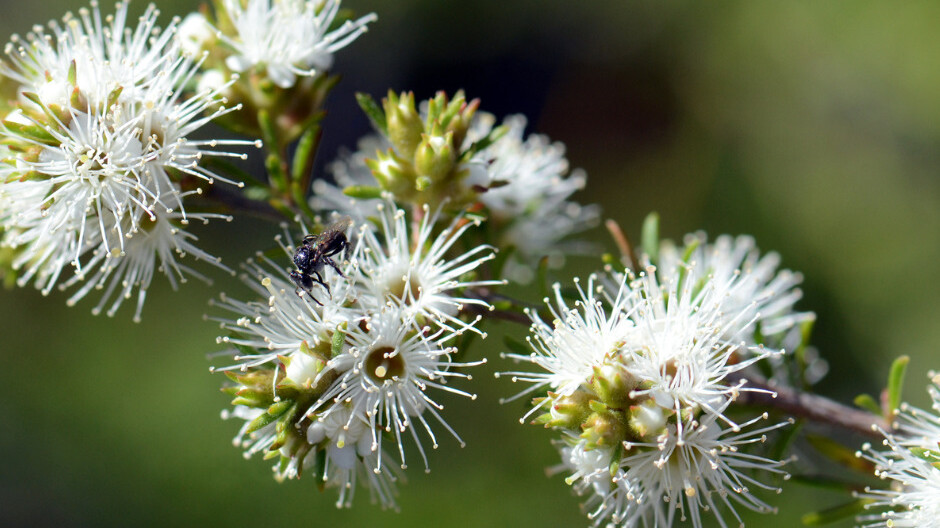Productive perennials provide solutions to many of today’s gardening challenges. Top of the list is that they save time! Perennials don’t need to be replaced yearly like typical annual veggie crops. Secondly, climate change means we are looking for edible plants that can withstand extremes. With many perennials originating from hot climates they are well suited to Australian conditions. And finally, with the growing cost of fresh produce it is great back-up to know you have hardy productive perennials as a constant in your garden.
Here are some of SGA’s favourites:
Leafy Green Perennials
Warrigal Greens (Tetragonia tetragonioides)
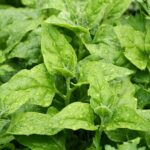 Warrigal greens are an edible perennial Australian native groundcover. Growing naturally in all parts of Australia except the Northern Territory, it is a leafy ground cover spreading to around 1.5m. It can be seen growing between rocks near beaches, on sand dunes and in estuaries and is tolerant of wind and salty soil. The leaves make a wonderful spinach substitute, but the stems are not edible. Leaves are high in vitamins A, B1, B2 and C3 and fibre as well as anti-oxidants.
Warrigal greens are an edible perennial Australian native groundcover. Growing naturally in all parts of Australia except the Northern Territory, it is a leafy ground cover spreading to around 1.5m. It can be seen growing between rocks near beaches, on sand dunes and in estuaries and is tolerant of wind and salty soil. The leaves make a wonderful spinach substitute, but the stems are not edible. Leaves are high in vitamins A, B1, B2 and C3 and fibre as well as anti-oxidants.
Read more about growing warrigal greens in our Expert SGA Article – Warrigal Greens.
Malabar Spinach (Basella rubra)
 This decorative vine can provide nutritious, lush, green leaves for cooking or salads all summer long. The small tender leaves are best for salads. Malabar spinach originated in tropical Africa and Asia so grows best in the warmer northern regions of Australia where it grows as a perennial. In cooler regions it will grow as a vigorous annual in summer, dying off in winter. When grown in good compost and watered twice a week, the vines will climb steadfastly upwards covering tripods and trellises creating a wall of leaves. Undeterred by extreme conditions they almost seem to go crazy in heatwaves. Cook the leaves as you would spinach. They make valuable additions to curries and stews.
This decorative vine can provide nutritious, lush, green leaves for cooking or salads all summer long. The small tender leaves are best for salads. Malabar spinach originated in tropical Africa and Asia so grows best in the warmer northern regions of Australia where it grows as a perennial. In cooler regions it will grow as a vigorous annual in summer, dying off in winter. When grown in good compost and watered twice a week, the vines will climb steadfastly upwards covering tripods and trellises creating a wall of leaves. Undeterred by extreme conditions they almost seem to go crazy in heatwaves. Cook the leaves as you would spinach. They make valuable additions to curries and stews.
Read more about growing Malabar spinach as well as background on a research project looking into the medicinal properties of the vines berries in our Expert SGA Article – Malabar Spinach Research Project.
Veggie Perennials
Globe Artichoke (Cynara scolymus)
 The Globe Artichoke is a member of the Asteraceae family, is a thistle and the flower bud is eaten. As well as providing food, globe artichokes are attractive plants in the garden. Growing to 1 – 1.5 metres in height and width, they make a stately feature and because they are perennial, a spot needs to be chosen that allows full advantage to be taken of the appearance of their graceful arching leaves.
The Globe Artichoke is a member of the Asteraceae family, is a thistle and the flower bud is eaten. As well as providing food, globe artichokes are attractive plants in the garden. Growing to 1 – 1.5 metres in height and width, they make a stately feature and because they are perennial, a spot needs to be chosen that allows full advantage to be taken of the appearance of their graceful arching leaves.
Read more about growing globe artichokes in our Expert SGA Article – Globe Artichokes.
Asparagus (Asparagus officinalis)
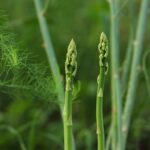 Asparagus is quite easily grown and when established, will continue to produce for 15-20 years, so it is important to allocate it its own bed, where it will not be disturbed by the comings and goings of short lived annual crops. It must also be kept weed free and well mulched with pea straw or Lucerne mulch. A sunny position, preferably free from strong winds and potential competition from trees should be chosen for the permanent placing of these perennial plants.
Asparagus is quite easily grown and when established, will continue to produce for 15-20 years, so it is important to allocate it its own bed, where it will not be disturbed by the comings and goings of short lived annual crops. It must also be kept weed free and well mulched with pea straw or Lucerne mulch. A sunny position, preferably free from strong winds and potential competition from trees should be chosen for the permanent placing of these perennial plants.
Read more about growing asparagus in our Expert SGA Article – Asparagus.
Fruity Perennials
Rhubarb (Rheum rhabarbarum cv.)
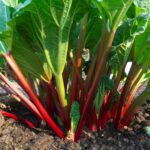 Although technically a vegetable, rhubarb stems are mostly used as a fruit in a culinary sense – delicious stewed, in pies or crumbles. This herbaceous perennial lives for a number of years, so although it can die down during winter months it does bounce right back up again in spring, making it a great (almost) continual harvest.
Although technically a vegetable, rhubarb stems are mostly used as a fruit in a culinary sense – delicious stewed, in pies or crumbles. This herbaceous perennial lives for a number of years, so although it can die down during winter months it does bounce right back up again in spring, making it a great (almost) continual harvest.
Read more about growing rhubarb in our Expert SGA Article – Rhubarb.
Pepino (Solanum muricatum)
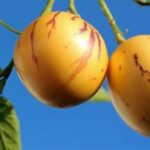 The pepino, known also as melon pear has been widely known in South America where it originated, but it took quite a while to get into Australian gardens. One of its big advantages is that it is a bushy shrub which persists from year to year in temperate regions and produces fruit for many months – even the whole year in warmer areas.
The pepino, known also as melon pear has been widely known in South America where it originated, but it took quite a while to get into Australian gardens. One of its big advantages is that it is a bushy shrub which persists from year to year in temperate regions and produces fruit for many months – even the whole year in warmer areas.
Read more about growing pepinos in our Expert SGA Article – Pepino – A Perennial Fruiting Shrub.
Midyim Berry (Austromyrtus dulcis)
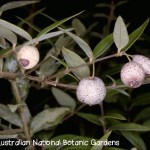 The midyim berry Austromyrtus dulcis is an easy to grow bushfood which occurs naturally in coastal areas ranging from northern NSW to Fraser Island in Queensland. It is (also known as midgen berry or sand berry). A favourite with First Nation’s people it has a sweet, but tangy flavour which means it is nice to eat fresh, but also great in pies and preserves.
The midyim berry Austromyrtus dulcis is an easy to grow bushfood which occurs naturally in coastal areas ranging from northern NSW to Fraser Island in Queensland. It is (also known as midgen berry or sand berry). A favourite with First Nation’s people it has a sweet, but tangy flavour which means it is nice to eat fresh, but also great in pies and preserves.
Read more about growing midyim berries in our Expert SGA Article – Midyim Berry.
Related Articles:
Wildflower gardens – What’s the buzz about?
In the quest for sustainable and environmentally conscious practices, gardening enthusiasts and nature lovers alike are turning to a time-tested…
Garden Journaling – Slow down to tune in.
As we move through the year and our gardens evolve, there's something magical about documenting the journey. Garden journaling is an art that enables…


